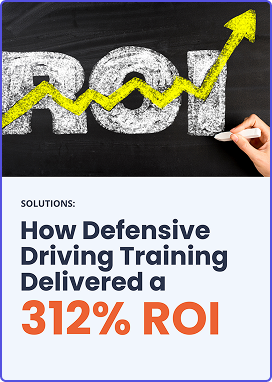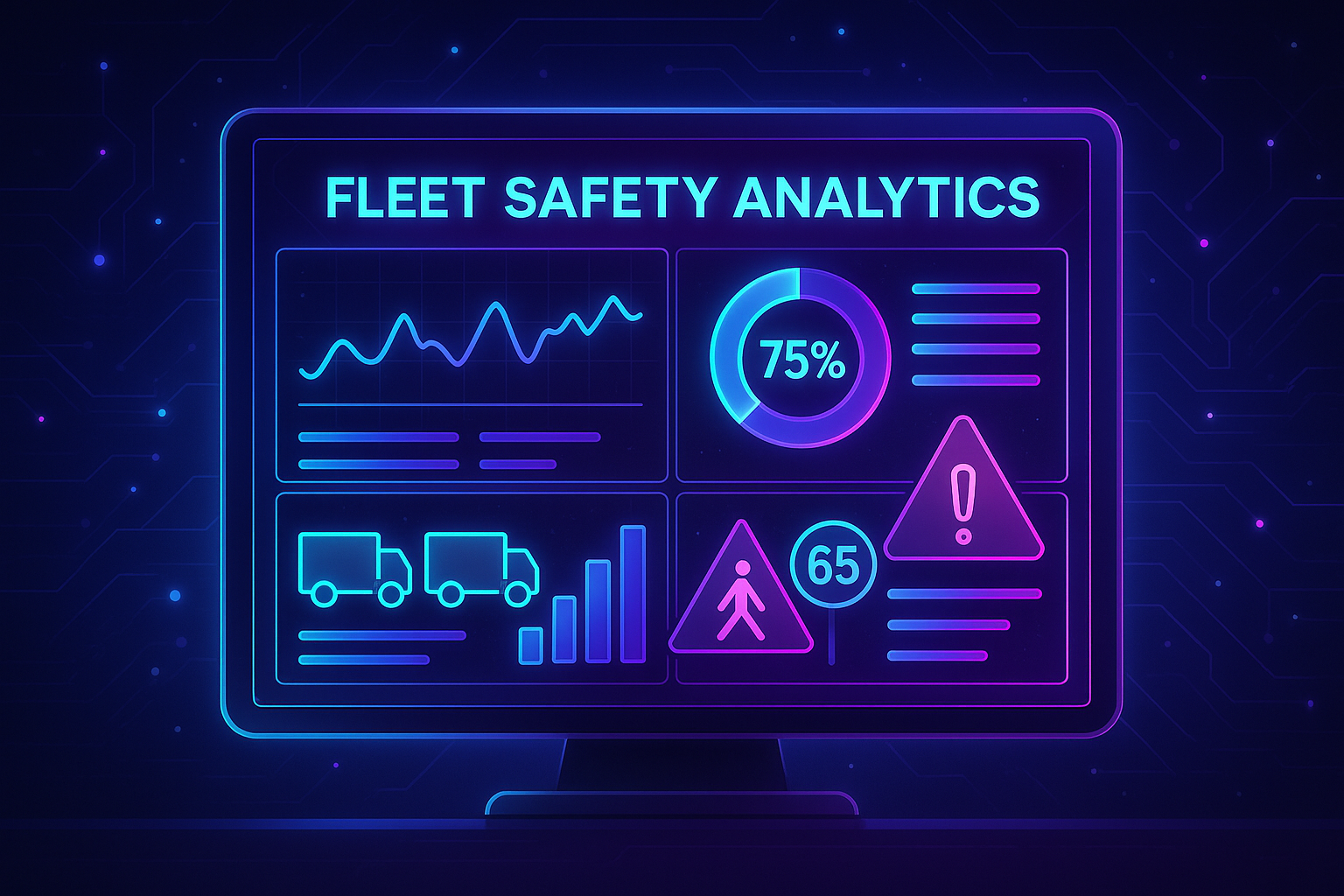
Why Ignoring Driver Feedback Creates Disengaged Teams—and What to Do About It
Every fleet safety program looks good on paper. You’ve got training modules, SOPs, checklists, and maybe even real-time telematics. But ask yourself: Do your drivers believe in it? Or are they just trying to get through it?
The difference between a “compliant” driver and an engaged safety partner often comes down to one overlooked factor: feedback. Specifically, how often it’s collected, how seriously it’s considered, and how clearly it’s acted upon.
This article explores what drivers really think of your safety program, why ignoring their perspective undermines its effectiveness, and how smart fleets are redesigning their programs with real input—boosting both safety outcomes and morale.
The Silent Cost of Ignored Driver Feedback
You can’t afford disengagement in safety programs—especially in high-risk, high-responsibility roles like commercial driving. When drivers feel their input isn’t valued or acted upon, the consequences are subtle but serious:
- They’re less likely to report hazards or near misses—cutting off early warning signals before issues escalate.
- They often disengage from training, treating it as a checkbox rather than a valuable tool.
- They lose confidence in leadership, especially when actions contradict safety messaging.
- They may become more likely to bend rules or make reactive decisions under pressure.
This disconnect can create a dangerous feedback loop: drivers stop speaking up, managers assume silence means success, and minor oversights grow into larger operational or safety failures.
Studies from the FMCSA and National Safety Council have shown that open communication and strong safety culture are directly linked to lower incident rates and higher driver retention. But communication is a two-way street—and programs that don’t create space for feedback often fail to evolve with the real-world needs of the fleet.
What Your Drivers Are Thinking (But Rarely Saying)
Behind closed doors (or on anonymous surveys), drivers often express frustrations that don’t show up in formal safety audits:
- “They talk about safety, but then overload our routes.”
- “All the training is from five years ago—it doesn’t match real conditions.”
- “They only care about safety when an accident happens.”
- “Feedback just disappears. I don’t know why I bother.”
If your safety culture feels like a one-way street, it’s possible that your most valuable insights are being ignored—and your drivers are checking out.
Key Signs Your Safety Program Is Missing the Mark
Warning Sign What It Really Means
Low near-miss reporting Drivers don’t feel safe admitting mistakes
High turnover in first 90 days Onboarding fails to connect or build trust
Frequent complaints about routing/scheduling Drivers feel system pressure overrides safety
Poor training retention Content is irrelevant or disengaging
Little participation in safety meetings Sessions are top-down, not collaborative
How to Rebuild a Safety Program Drivers Trust
- Treat Drivers as Safety Stakeholders, Not Just Recipients
Invite a few experienced drivers to participate in safety committee meetings or review training materials before rollout.
Why it works: Peer feedback highlights blind spots and ensures training reflects real-world scenarios, not just policy language.
- Build In Feedback Loops That Are Fast and Visible
Don’t just collect survey data—close the loop. Let drivers know:
- What feedback was shared
- What action will (or won’t) be taken—and why
- When updates will go live
- Who they can talk to for follow-up
Even a short feedback digest in weekly dispatches shows you’re listening.
- Use Anonymous Surveys Regularly—Not Just Annually
Rotate topics monthly (e.g., route stress, safety tools, fatigue, communication) and keep questions short, targeted, and actionable.
Example:
“Do you feel empowered to stop or reroute when you encounter unsafe driving conditions?”
“What safety topic would you like covered in next month’s training?”
- Make Safety Training Feel Relevant, Not Repetitive
Engage your drivers with:
- Short, scenario-based videos
- Microlearning modules that they can complete in minutes
- Real stories from your own fleet’s incidents (anonymized)
Even better? Let high-performing drivers co-lead training or share best practices. It elevates culture and reduces eye-rolls.
- Reward Safe Behavior in Ways That Matter
Skip the pizza parties. Instead, tie recognition to:
- Fewer harsh driving events
- Proactive hazard reporting
- Peer-nominated “Safety MVP” awards
- Quarterly bonuses based on behavior metrics
Drivers respond to programs that respect their time and their skill—not just generic perks.
Bonus Tip: Use Telematics as a Conversation Starter—Not a Surveillance Tool
Many drivers mistrust vehicle data because it’s used reactively (i.e., “you were speeding again”). Instead, use telematics to:
- Offer praise for clean weeks
- Identify coaching opportunities with empathy
- Let drivers track their improvement
- Share anonymized team benchmarks to build friendly competition
You’ll move from compliance policing to performance coaching—and that’s where real improvement happens.
Real Fleet Example: Culture Shift at Boyle Transportation
Boyle Transportation—a Massachusetts-based fleet specializing in sensitive and high-security freight—provides a powerful example of how prioritizing driver feedback and a collaborative safety culture can transform outcomes.
Rather than rely solely on top-down rules or post-incident corrections, Boyle has long embedded driver engagement into its safety leadership approach. Drivers are encouraged to:
- Participate in policy reviews
- Suggest operational changes based on real-world experience
- Share safety observations without fear of reprisal
This proactive, people-first strategy has paid off. According to the Truckload Carriers Association (TCA) and CCJ’s Best Fleets to Drive For, Boyle maintains:
- Exceptionally low turnover
- High levels of driver satisfaction
- A strong safety record, supported by consistent recognition for fleet excellence
By creating a workplace culture where management views their driving professionals as safety partners, not just policy followers, Boyle demonstrates that voice and accountability drive results.
Lesson: Safety performance improves when leadership listens—and drivers feel empowered to speak up.
Final Thoughts: Safety Happens with Drivers, Not to Them
Your fleet safety program is only as good as the people behind the wheel believe it to be. If your drivers feel dismissed, outdated, or sidelined, even the best technology and policies won’t deliver results.
But if you build a safety program that listens, evolves, and empowers?
You don’t just improve safety—you build loyalty, reputation, and real resilience.
Quick Takeaways: How to Win Driver Trust in Safety Programs
- Involve drivers in shaping training and policy
- Close the loop on feedback with clear communication
- Prioritize real-world relevance in education
- Recognize behavior, not just outcomes
- Treat telematics as a coaching tool—not surveillance







